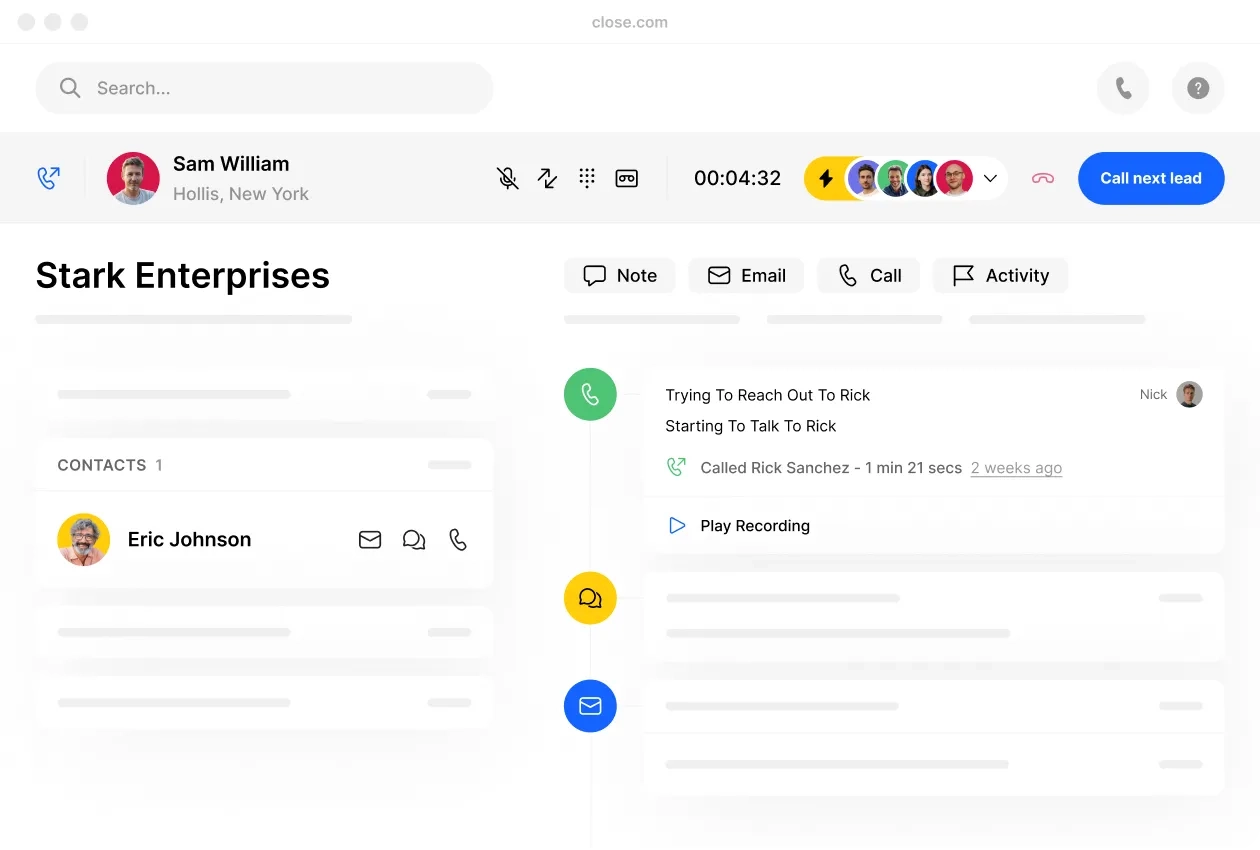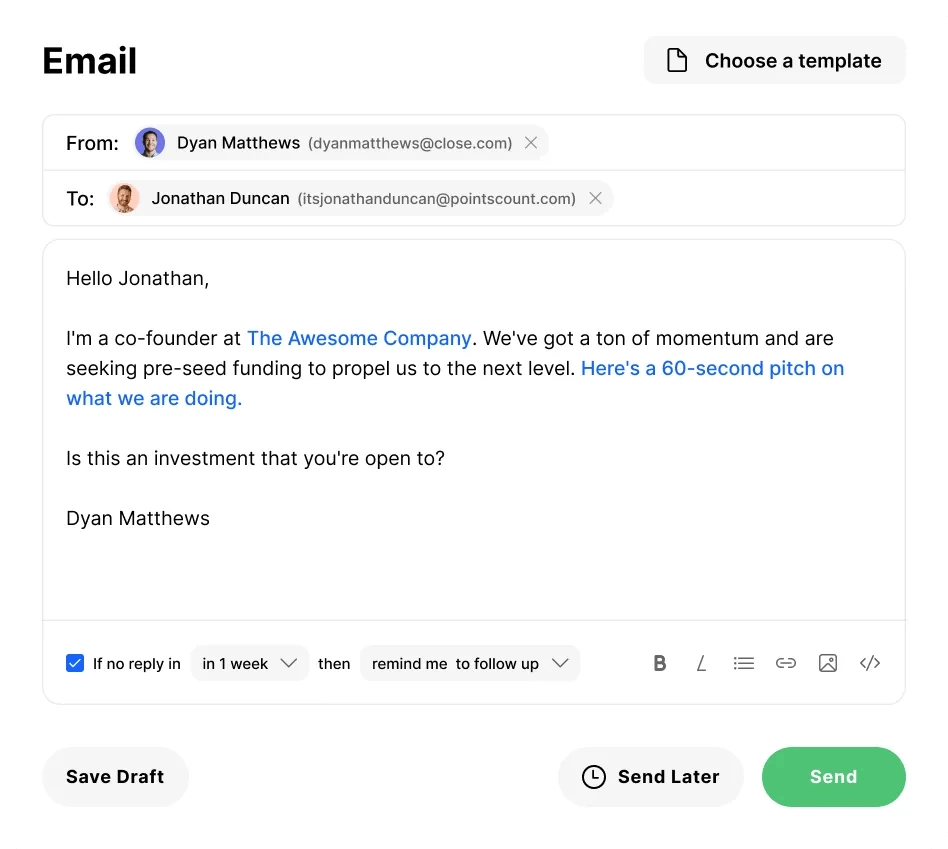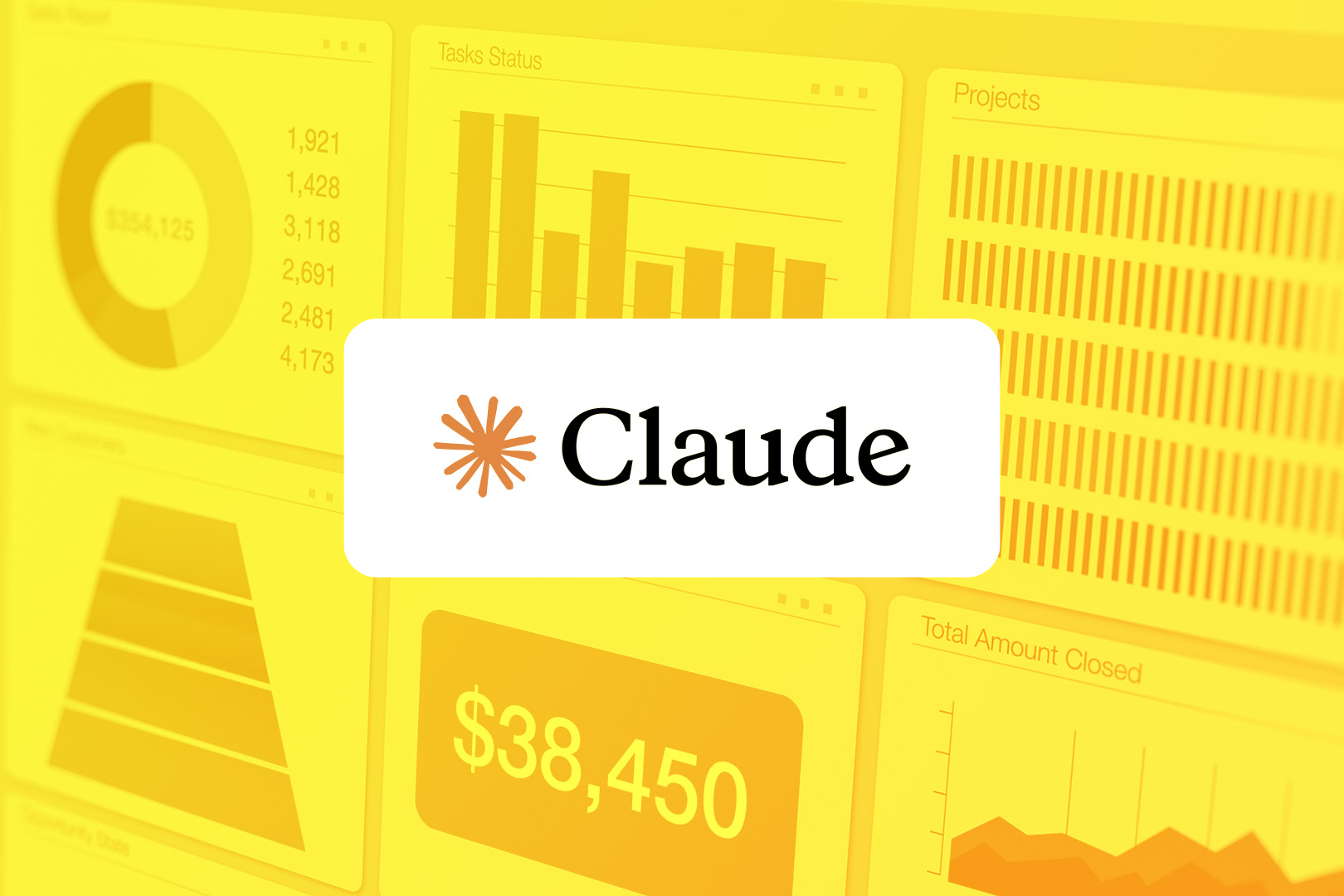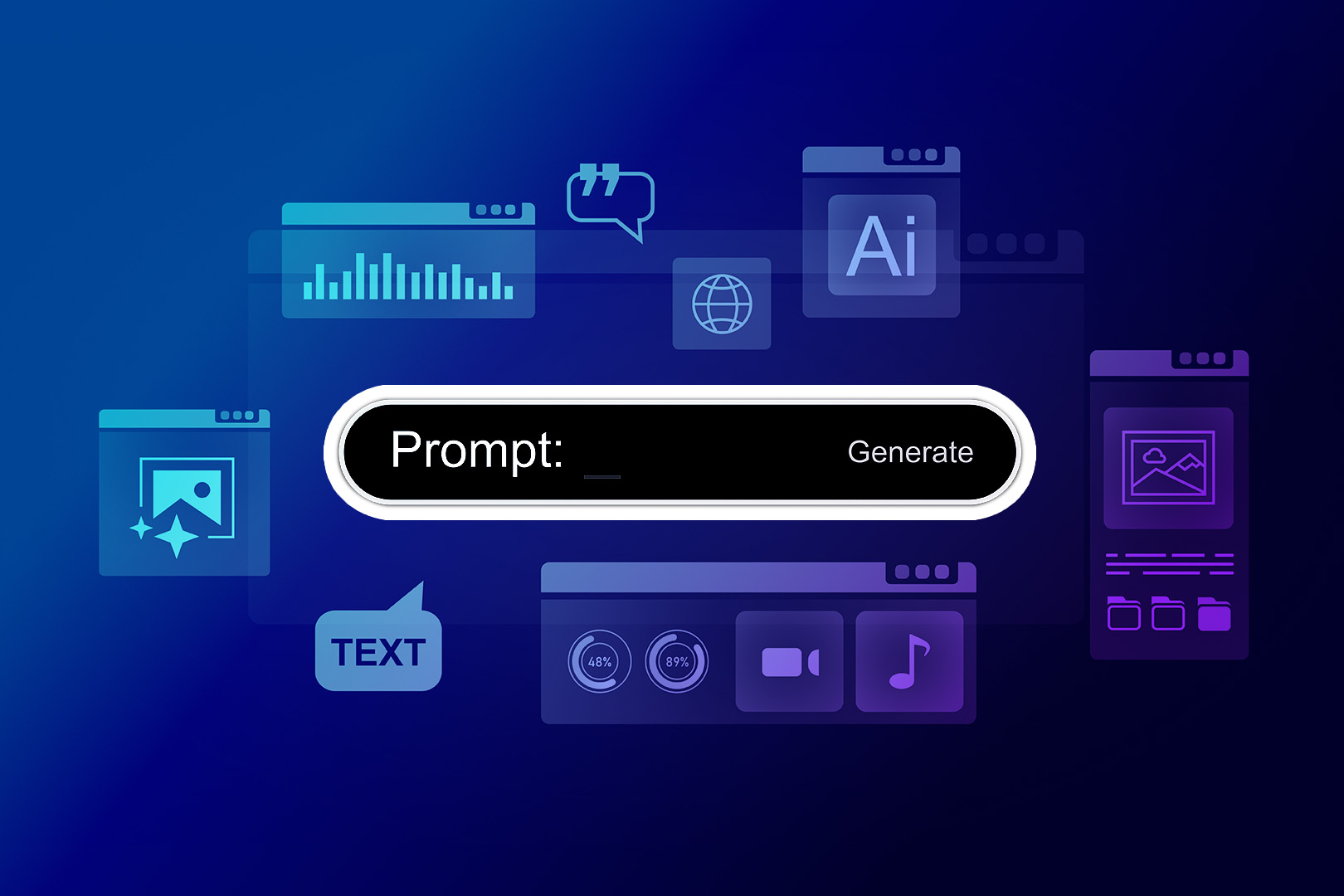
How to Increase B2B Sales: 10 Proven Strategies That Work
Wait, don't tell me…you're here because sales have lagged in recent months. Your salespeople are putting in the effort, but they aren't generating results–and you’re not sure why.
Now the pressure is on. If you don't quickly improve your B2B sales strategy—from lead generation to outreach—you’ll risk missing quota.
Never fear! B2B sales—selling products and services to other businesses, rather than to individual consumers—isn't rocket science. If you're willing to work hard and implement a few proven tactics, you will see a bump in sales.
Below we've listed 10 proven B2B sales strategies you can use to meet more prospects, build stronger relationships, and, at the end of the day, close more deals. Let's take a look…
Historically Common Tactics in B2B Sales
B2B sales is simple: find your ideal customers, tell them why your products are the best, and influence their purchase decisions with an offer they can't refuse.
Simple, right? Just remember, "simple" and "easy" aren't always the same thing.
How do you find ideal customers for your company? What's the best way to explain benefits to prospects and suggest your products are better than the competition? And what constitutes an irresistible offer—is it a super low price? Free goodies? Something else?
Here's the truth: the B2B sales process isn't complicated, but actually making B2B sales is difficult. That's why sales reps have long used proven tactics to close more business deals. These include:
- Know Your Buyers: Success in sales always starts with an in-depth understanding of your ideal customer. You can't make sales if you don't know who you're selling to.
- Use the Phone: Know of a potential customer? Give them a ring. Cold calling is a tried and true B2B sales tactic. (More on this one in the next section.)
- Create Content: These days, we have the internet—maybe you've heard of it? 🙃 It's given rise to content marketing, i.e., creating online materials (blogs, videos, etc.) to promote a business. Savvy sales teams utilize content to attract leads and educate top-of-the-funnel prospects. Jobber's Housekeeper Salary guide is a great example of top-of-funnel content that attracts prospective leads in the cleaning industry to their site
- Ask For Referrals: 93 percent of people trust recommendations from friends and family, making this one of the most powerful sources of leads. If you can get happy customers to rep your brand, you'll close more deals in less time. Yes, please!
These tactics will help you improve B2B sales, but there’s a good chance you’re already familiar with them.
Thanks to technology and evolving customer preferences, there are new ways to net B2B sales in 2024. Let's talk about them!
10 Proven Strategies to Increase B2B Sales
It doesn't matter if you're an established small business selling physical products, or a new startup pushing a killer SaaS solution, these 10 tactics will help you increase business-to-business sales.
1. Define an Accurate B2B Buyer Persona so You Know Who You're Selling to
Who is your company's ideal customer?
This is super important, so I want you to take a moment to really think about your answer. (Note: if you're thinking, "Relax, we just sell to everyone," you're very much incorrect.)
Maybe you sell to millennials in the software industry.
Or small business owners between the ages of 36 and 54 who live in Northern California and need help with their taxes. Or homeowners in Phoenix, Arizona, who want to invest in solar and reduce their energy bills.

Once you define your B2B buyer persona, document firmographics, buying committee roles, goals, and pain points to guide targeted outreach.
Your B2B buyer's personas should include demographic information, such as the age, gender, and role of your target customer, the industry they work in, and the size of their company. It should also include psychographic details like their goals and daily challenges.
To find this information, consult your CRM software and talk with customer support reps. Look at your current customer base, especially those that drive high revenue and have a low churn rate. You can also conduct online research to learn more about your ideal customers.
2. Make Sure Sales + Marketing are Aligned
When sales and marketing teams work together, good things happen. Like, really good things. According to Marketo, better marketing and sales alignment can lead to 209 percent more revenue.
The question is, how do you align these two teams? If it was easy, every company would do it. You have to put in the work to make it happen. These tips will help:
- Align Goals: Your marketing and sales teams should aim to accomplish the same things, albeit in different ways. For example, if the sales goal is more customers, marketing can focus on generating high-quality B2B leads, while sales can focus on closing them.
- Share Data: Keep a single source of truth in your CRM and sync MQL→SQL definitions, lifecycle stages, and campaign attribution. The easiest way to do this is to invest in a proven CRM and update it regularly. That way employees in each department always have the latest deets on every prospect.
- Communicate: Finally, make sure marketing associates and sales reps talk regularly. Is the content that marketing creates generating quality leads? Does sales need to adjust its messaging to match marketing campaigns? Talk and find out.
3. Try Creative B2B Lead Generation Strategies to Fill Your Pipeline
Every sales department wants more leads. You may need to get creative to generate more for your company. Don't worry, I've got you covered:
- Invest in SEO: Search engine optimization, SEO for short, is the act of improving web pages so that they rank better in search engines. It's usually a marketing activity, but it doesn't have to be. Try your hand at SEO to bring in better, more buy-ready leads. (This is a good opportunity to work with marketing!). Also, check out this simple on-page checklist and make sure your on-page SEO is up to date.
- Use Website Chat: Prospects visit your company's website every day. Install a chat app and talk to them while they're there. This will help build trust and give you a chance to secure their email address and phone number, and with remote device access and other VPN uses, ensure your privacy and data protection, send them valuable content, like a whitepaper, and supercharge the selling experience.
- Get on Camera: Video is an incredible digital marketing tool. Why? Because modern buyers love it. Thankfully, there are tons of ways to utilize video. You could host live webinars or publish content on YouTube. Or get with the cool kids and post short videos on TikTok. (More on social selling below.)
4. Use Social Selling to Nurture Leads and Get To Know Your Audience
Social media is powerful. Don't believe me? Try this stat for size: 78 percent of consumers are more willing to buy from a brand after a positive experience on social media.
You can't afford to ignore social selling in 2025—it accelerates trust, shortens cycles, and increases demo requests.
Thankfully, there's a lot more to social these days than duck face selfies. (I'm trying to forget about them, too.)
Sites like Facebook, Instagram, Twitter, and LinkedIn help you position your brand as an expert in its field, share positive customer testimonials, and engage your target audience in meaningful conversations.
Most social networks have advertising platforms, too, so you can easily reach your ideal customers for a relatively low price by tapping into this resource.
5. Focus on Solving Customer Pain Points, not Your Features
Pain points refer to issues your potential customers deal with regularly. Once you understand these, you can frame your solution as the answer to their challenges.
There are four common B2B pain points to keep in mind:
- Finances: Your target audience spends too much money on their current solution.
- Productivity: Your target audience's current tools keep them from achieving more.
- Processes: Your target audience uses old, outdated workflows and tools.
- Support: Your target audience doesn't feel supported by their current provider.
Find out which pain points are your ideal customer experience. Then, you offer them a solution that hopefully encourages them to buy from you.
How do you learn about pain points? It's simple: you research your audience. Talk to them, ask your support team for insights, and read reviews for your products. Reading reviews from your competitors can also help you find these pain points.
6. Empower Your Sales Reps (or Yourself) with Sales Tools + Training
As a sales manager, you need to empower your reps. This will help them reach their full potential and close more deals for your company. So, how do you do it?
Start with quality training—not just during the onboarding process, but throughout the year. You could, for example, give them access to online courses. Or pay for them to attend in-person conferences and seminars. Call coaching can help your team test new strategies and upgrade their sales skills.
Give your reps access to sales enablement materials, too, such as proven call scripts and content (eBooks, whitepapers, and case studies) they can use to increase B2B sales.
Finally, empower your reps by giving them access to the right technology. Quality CRM and email marketing platforms, power dialer tools, and a subscription to LinkedIn Sales Navigator will go a long way toward helping reps succeed.

What if you manage sales for your business on your own? All of the above tips still apply! You need to empower yourself with the right training, sales enablement materials, and tools to close deals. If you'd get it for an employee, ensure you get it for yourself, too.
7. Level-Up Your Cold Calling Strategies
Are you thinking: "Cold calling? Seriously? We have the internet. Social selling is totally a thing. Stop living in the past and get with the times."
Here's the problem: cold calling is not—I repeat, is not—dead. In fact, 82 percent of buyers accept meetings with sellers who proactively reach out.

The key is to approach cold calling prospects the right way. You can't just dial a random number and hope for the best. Well, you can, but you’d be wasting your time.
Instead, thoroughly research every prospect you call. That way you can personalize your conversations with them. Once you get a potential customer on the phone, engage them by asking questions about their struggles and their goals. This will lead to more success.
8. Use Scripts to Improve Your Sales Pitches
One of the best ways to improve your cold calling results is to use scripts. Cold calling scripts help you say the right thing at the right time. As such, they'll help you secure more appointments and, ultimately, sales.
To create a winning script for yourself and your reps, keep these two things in mind:
- No Selling: Don't try to sell a product or service during cold phone calls. Instead, use your time to learn more about your prospects. Are they qualified sales leads? If so, attempt to book a future appointment with them where you can pitch your solution.
- Be Relatable: After introducing yourself and your company, attempt to relate to your prospect. How? Address a specific pain point they deal with and provide a solution.
Or, hop on the express train to cold calling success and simply use these proven cold calling scripts, instead of crafting your own. It will save you loads of time.
9. Continue to Build the Sales Pipeline
There are a lot of "rules" in sales: know your audience, always be closing, and put your customers first come to mind. Here's another one for you: never stop building your sales pipeline.
If your sales pipeline isn't growing, it's shrinking—and you definitely don't want that. Luckily, there are plenty of ways to push the pedal to the metal and inspire growth. We've covered a bunch of them in this article: social selling, cold calling, etc.
You also need to follow up with prospects regularly. This will shorten your sales cycle so you can close more deals and generate more revenue for your company. Win!
What do you do after you close a deal? Besides providing excellent service and delivering on every promise you made during the sales process, ask happy customers for referrals.
As mentioned above, people trust friends and family more than brands. You'll close more deals if you can entice your customers to rep your company to their social circles. Guaranteed.
10. Don't Sleep On Email Outreach
According to Constant Contact, email marketing generates $36 for every $1 spent. That's a pretty good ROI. Why wouldn't you use this channel? Some sales reps think it's too old school or aren't really sure how to keep up with the deluge of emails.
Here's the thing--once you have a person's email address, you can send them relevant content, easily announce special deals and/or new products, and otherwise nurture leads into customers.

Also, with email you control the platform. Yes, potential customers can unsubscribe from your list at any moment. But you'll never have to worry about algorithm changes, arbitrary rules, and other shenanigans (looking at you Facebook!). This is priceless.
Another reason to use email in sales? You can create an email sequence once and set it to send automatically. No need to manually reach out over and over again!
B2B Sales Strategy Examples
The B2B sales strategies above will help you connect with decision-makers, guide prospects through the sales funnel, and close more deals. All you have to do is implement them.
Here are two real-world examples to illustrate these techniques in action:
Example #1: Using Social Selling to Close More Deals
Meet Johnny, an ambitious sales rep for Awesome Company Inc., better known as ACI.
Like many B2B sales reps, Johnny is tasked with sourcing his own leads. Good thing he's a boss when it comes to social selling! He practically lives on LinkedIn.
Johnny uses the network to post helpful content that relates to the products he sells. Said content includes helpful tips, links to blogs and whitepapers that his company has published, and invites to live webinars, which Johnny hosts from time to time.
Johnny's dedication to LinkedIn allows him to meet a ton of potential customers, one of whom is Miguel, who owns a small business in Los Angeles, CA. Miguel enjoys Johnny's content so much, he signed up for Johnny's email list and now gets first dibs on special deals.
ACI decides to run a holiday sale, offering the best prices of the year on their various products. Miguel is intrigued and reaches out to Johnny via the phone. They have a lengthy conversation. By the end, Johnny convinces Miguel that his company's products will solve the issues he deals with regularly. Deal closed.
Example #2: The Importance of The Follow Up
Next up, Carmen, the CEO of Better Organization Co. (BOC), a flashy new startup in the tech space. Carmen's company has a great product, but at this point in its journey, is unable to hire a full-time sales team. So, most of the sales duties fall onto her more-than-capable shoulders.
Like many B2B businesses, Carmen doesn't wait around for leads to fall into her lap. Ain't nobody got time for that! Instead, Carmen finds potential customers and cold calls them. Once she gets someone on the phone, she uses a script to keep conversations on point.
Carmen's call scripts highlight specific challenges her company's software can help prospects overcome and how current customers currently leverage her tools. The result? Carmen books a ton of meetings with red-hot leads, many of whom end up buying.
One such prospect is Daniel. Carmen cold called him four months ago. They had a great conversation and scheduled a software demo a week later. Daniel had to cancel the meeting, but Carmen was relentless. She followed up with him every week via email.
Daniel finally broke down and booked another meeting with Carmen. He absolutely loved BOC's product once he saw it in action. This isn't B2C sales, however, which means Daniel has to run all potential purchases by his board of directors.
Fortunately, they loved the product, too, and Daniel's company is now a BOC customer.
Bonus Tips For Improving Your B2B Sales Process
I've shared a lot of information that will help you increase B2B sales. We're almost done, but I wanted to empty the playbook and give a few more tips to assist improve your B2B sales process:
- Invest in a CRM: Every B2B company needs a customer relationship management (CRM) tool. Why? Because it's tough (read: impossible) to keep track of leads and new customers without one. When you add a CRM to your company's tech stack, your reps can access more information to help them close more deals--for both inbound and outbound leads.
- Automate Communication: One of the best things about CRM software is the marketing automation features it provides. Use these features to follow up with leads automatically, and create winning email sequences that raise brand awareness, and, ultimately, generate more B2B customers.
- Evaluate Your Sales Strategies: Is your sales plan working? You won't know until you assess your strategies. Luckily, CRM software makes this easy to do. Dive into your key metrics to find areas where your strategies are not quite as effective. This will help you double down on winning tactics and eliminate those that don’t deliver results.
When it comes to CRM software for B2B companies, you can't go wrong with Close. We built Close specifically to help organizations like yours grow—fast.
Whether you need help prospecting for new potential customers, designing effective outreach campaigns, or generating more sales, Close can make it happen.
Try Close free for 14 days to see if it's the right tool for your B2B sales team.











